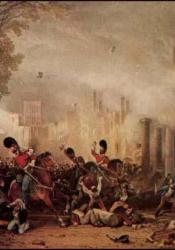The Reform Act of 1832
The Reform Act of 1832, or “Great Reform Act,” was an electoral reform bill that reshaped the way Members of the House of Commons were elected to office. Although Members of Parliament were technically elected prior to 1832, limitations on who could vote (only propertied men) and haphazardly drawn electoral district lines meant that a small number of aristocratic elites either held or controlled the majority of seats in both parliamentary houses. Bribery was rampant, and the lack of a secret ballot allowed campaigners to put pressure on voters. By 1830, massive public outcry against the “rotten” electoral system (combined with ruling-class fear of revolutionary uprising like the one that had just taken place in France) put enough pressure on the government to act. The Tory-dominated House of Lords held out until 1832, when, faced with riots in the streets of Bristol and other cities around the country, King William IV threatened to create new Whig members of the nobility by royal decree and add them to the House of Lords. The House of Lords caved and passed the Reform Act, which created new electoral districts to more accurately represent population, introduced voter registration to prevent fraud, and made all male householders living in homes worth at least 10 pounds per year eligible to vote. While the actual changes created by the Reform Act were moderate—even after the Act, only about 10 percent of the population could vote—the Act revealed the limits of the power of the House of Lords and laid the groundwork for a series of incremental reforms that defined the Victorian period.
Berman, Carolyn Vellenga. “On the Reform Act of 1832.” BRANCH: Britain, Representation and Nineteenth-Century History. Ed. Dino Franco Felluga. Extension of Romanticism and Victorianism on the Net. Web. 27 September 2020.

